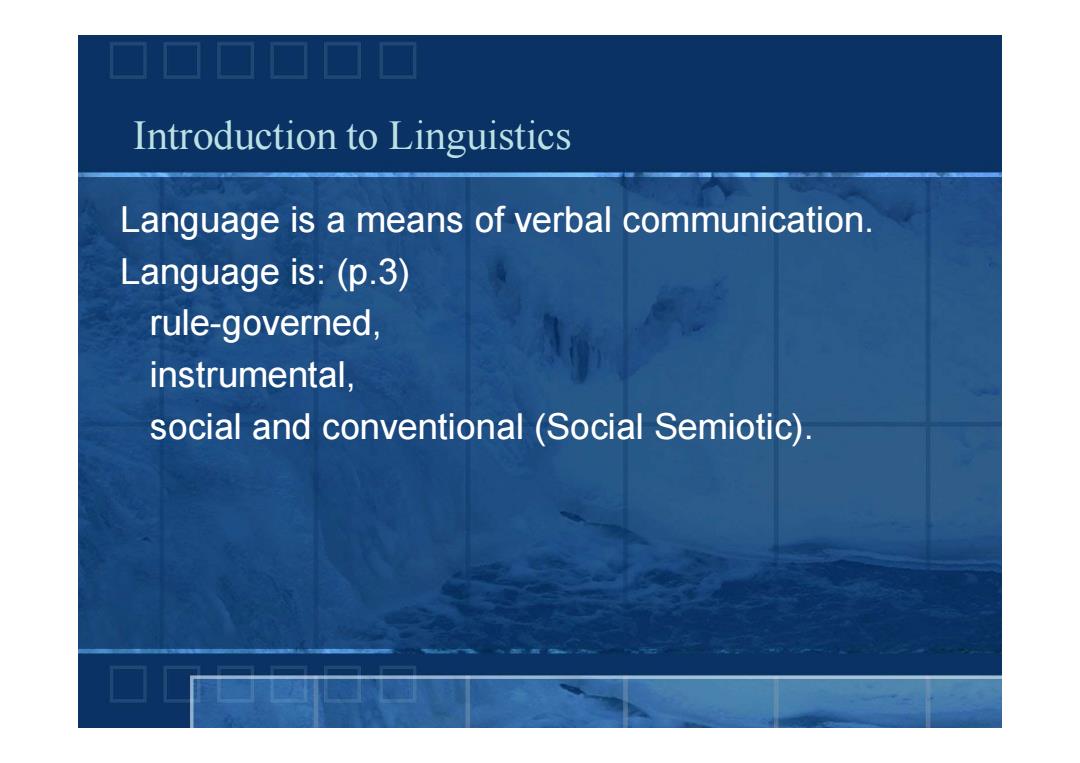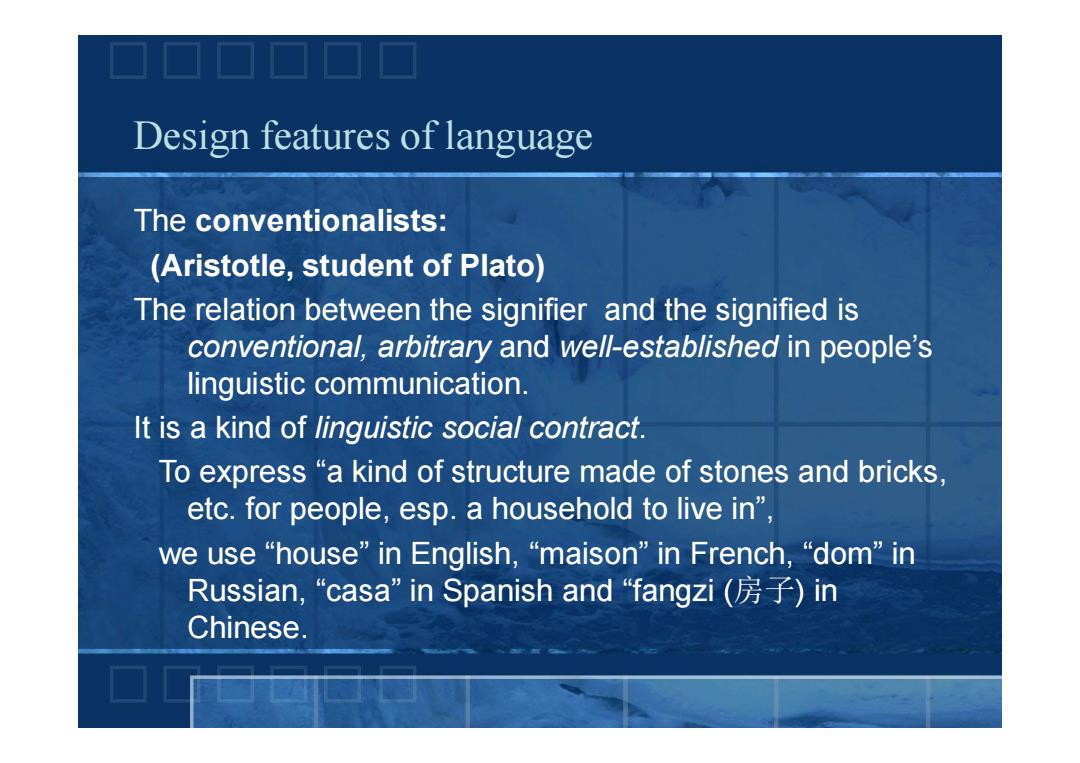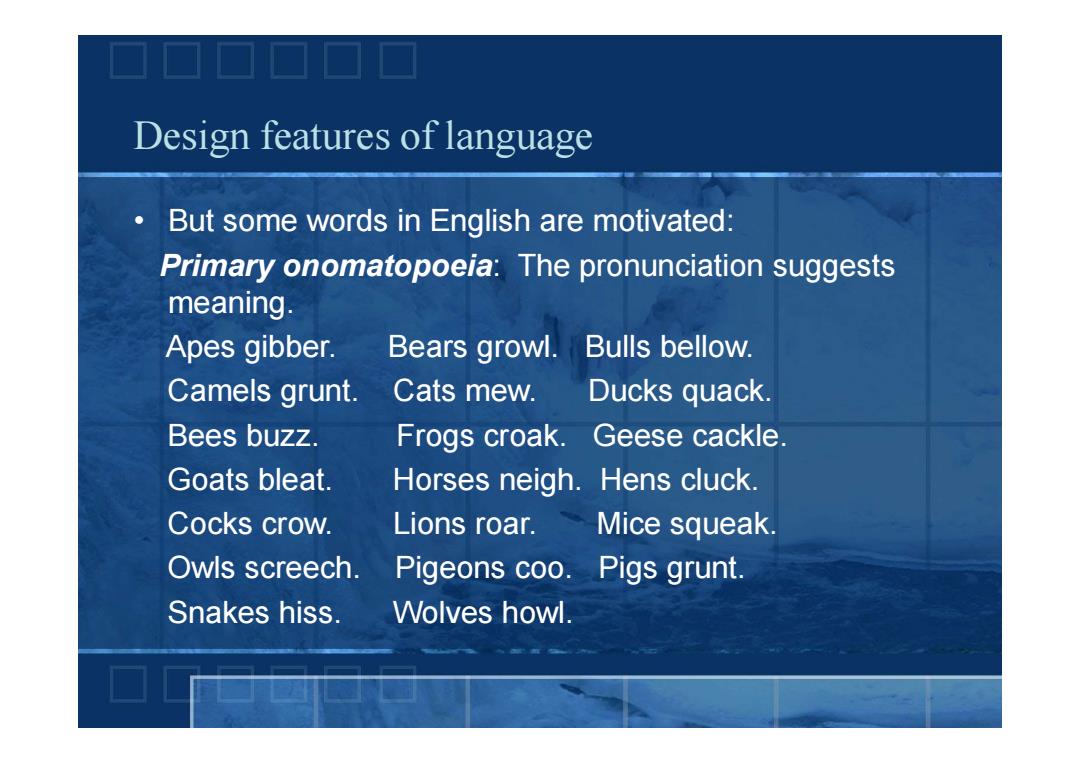
Introduction to Linguistics Language is a means of verbal communication. Language is:(p.3) rule-governed, instrumental, social and conventional(Social Semiotic)
Introduction to Linguistics Language is a means of verbal communication. Language is: (p.3) rule-governed, instrumental, social and conventional (Social Semiotic)

Design features of language (3)What are the design features of language? a.arbitrariness:signifier signified Two schools about the relationship between the signifier (sound image)and the signified (concept/referent): The naturalists:(Plato) There exists an intrinsic correspondence (a natural connection)between the sound image and the concept/referent
Design features of language (3) What are the design features of language? a. arbitrariness: signifier & signified Two schools about the relationship between the signifier (sound image) and the signified (concept/referent): The naturalists: (Plato) There exists an intrinsic correspondence (a natural connection) between the sound image and the concept/referent

Design features of language The conventionalists: (Aristotle,student of Plato) The relation between the signifier and the signified is conventional,arbitrary and well-established in people's linguistic communication. It is a kind of linguistic social contract. To express "a kind of structure made of stones and bricks, etc.for people,esp.a household to live in", we use“house”in English,"maison"”in French,“dom”in Russian,“casa”in Spanish and"fangzi(房子)in Chinese
Design features of language The conventionalists: (Aristotle, student of Plato) The relation between the signifier and the signified is conventional, arbitrary and well-established in people’s linguistic communication. It is a kind of linguistic social contract. To express “a kind of structure made of stones and bricks, etc. for people, esp. a household to live in”, we use “house” in English, “maison” in French, “dom” in Russian, “casa” in Spanish and “fangzi (房子) in Chinese

Design features of language But some words in English are motivated: Primary onomatopoeia:The pronunciation suggests meaning. Apes gibber. Bears growl.Bulls bellow. Camels grunt. Cats mew. Ducks quack. Bees buzz. Frogs croak.Geese cackle Goats bleat. Horses neigh.Hens cluck. Cocks crow. Lions roar. Mice squeak. Owls screech. Pigeons coo.Pigs grunt. Snakes hiss. Wolves howl
Design features of language • But some words in English are motivated: Primary onomatopoeia: The pronunciation suggests meaning. Apes gibber. Bears growl. Bulls bellow. Camels grunt. Cats mew. Ducks quack. Bees buzz. Frogs croak. Geese cackle. Goats bleat. Horses neigh. Hens cluck. Cocks crow. Lions roar. Mice squeak. Owls screech. Pigeons coo. Pigs grunt. Snakes hiss. Wolves howl

Design features of language Secondary onomatopoeia: Certain sounds and sound-sequences are associated with certain sense: /sn/may express three types of experiences: a).“"breath-noise”:snif(嗅),snuf(闻),snore(打鼾),snort (哼鼻,喷气) b).“quick separation or movement":snip(剪去),snap(折 断),snatch(抓取). c).“creeping'':snake,snail(蜗牛),sneak(潜行),snoop(窥 探)
Design features of language • Secondary onomatopoeia: Certain sounds and sound-sequences are associated with certain sense: /sn/ may express three types of experiences: a). “breath-noise”: sniff (嗅), snuff (闻), snore (打鼾),snort (哼鼻,喷气) b). “quick separation or movement”: snip (剪去), snap (折 断), snatch (抓取). c). “creeping”: snake, snail (蜗牛), sneak (潜行), snoop (窥 探)